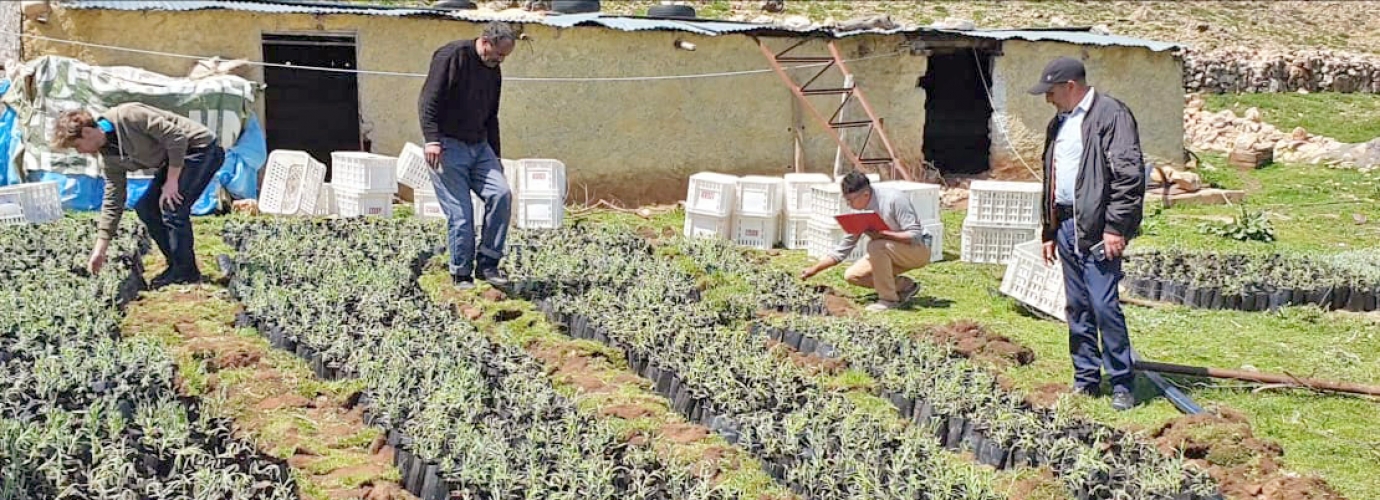The cultivation methods used today in the El Hajjaj’s lineage area in the Middle Atlas in Morocco aim to develop a significant turnover for the local populations, however the intensive cultivation of the apple tree causes significant damage to the ecosystems by directly affecting the aquifer and causing consequently a considerable drying up of the wetlands, streams, and lakes. For example: Dayet Aoua and Hachlaf lakes.
To overcome this problem, the Ifrane Model Forest (AFMI) association aimed at raising awareness among local actors, farmers, local authorities on the importance of shifting current cultivation methods towards sustainable agriculture to preserve natural resources for future generations.
The AFMI therefore proposed a crop alternative that would not have a negative effect on the environment or on the economic activity of farmers, namely to convert apple trees and unprofitable crops into lavender plants. In fact, moving from apple tree cultivation to lavender cultivation seems to be the right strategy since lavender, which grows in mountain climatic conditions, has the advantage of consuming less water and requires little maintenance for farmers, moreover, from an economic point of view it will be able to generate more profit per hectare. The harvested lavender can in fact be used in many fields such as cosmetics (body product, essential oil, etc.), nutrition (aromas) but also for medical use (anti-inflammatory, digestive, healing, etc.).
Before starting the planting operation, the Ifrane Model Forest carried out the geolocation and topographic survey of the plots with the preparation of a technical sheet for each one describing the physical environment such as topography, nature of the geological substrate, lithology and condition of the soil, and current land use like the type of crop, total area and irrigated area. The AFMI finally selected 27 hectares of land that will be converted to lavender in two phases.
The beneficiaries, before receiving the seedlings, were asked to prepare the soil of their plots, commit to irrigate the plots regularly for one year and keep any animal outside the plots.
For this project, the AFMI collaborated with the Moroccan Association for Biodiversity and the Means of Subsistence (MBLA) of Marrakech, which decided to contribute to the project by providing the lavender plants at a lower price of 50%.
The management and plant operation of phase one is completed and phase two will be launched in October 2021. Results of the first operation are excellent.


